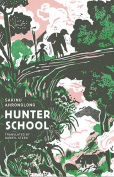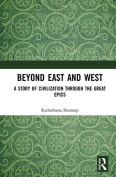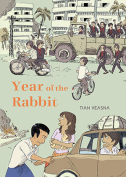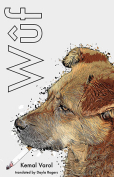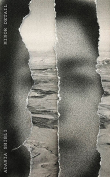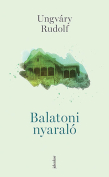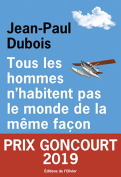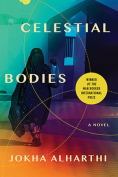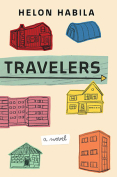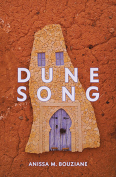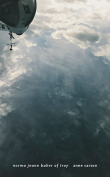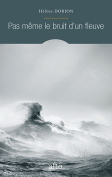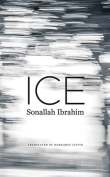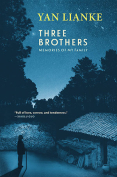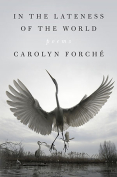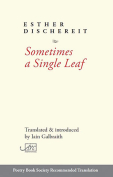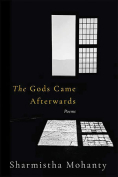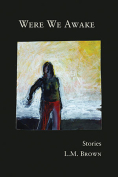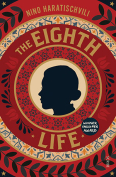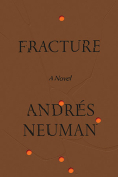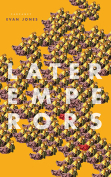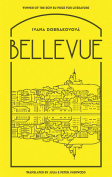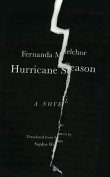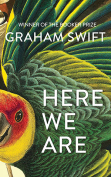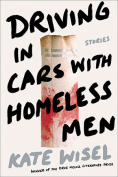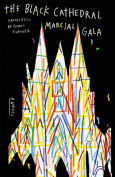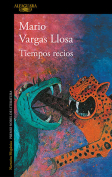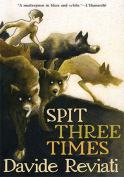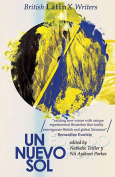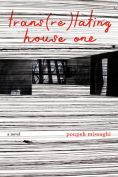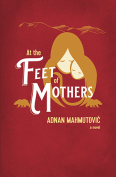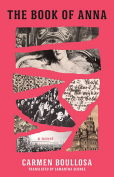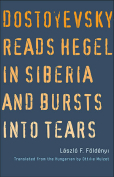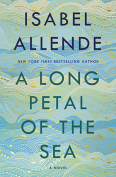Dune Song by Anissa M. Bouziane
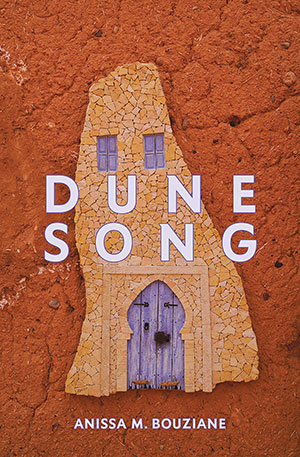 Northampton, Massachusetts. Interlink. 2019. 350 pages.
Northampton, Massachusetts. Interlink. 2019. 350 pages.
WHAT CAN ONE look for in the daunting vastness of the desert? What happens when the desert teems with the harrowing echoes of terror?
Jeehan Nathaar, the protagonist of Dune Song, is, like Anissa M. Bouziane, a US-born Moroccan American scholar who returns to Morocco after having witnessed the collapse of the World Trade Center. This traumatic experience continues to haunt her throughout the narrative as “the echo of dying voices” rings in her head, forcing her to deal with the burden of an obsessive and often unexplainable fear. Jeehan’s initial plan, after leaving New York, is to join Ali, a journalist friend with whom she had a brief affair, and travel together to southern Morocco, where they plan to investigate the trafficking networks of migrants crossing the desert. But the reader soon understands that Jeehan’s departure is an attempt as much to flee fear and horror as to reinvent herself on the other side of the Atlantic. Having abandoned her dissertation, lost her funding, and left academia following the death of her mentor, Jeehan seeks a way out: “I was running away from my shattered dreams,” she writes. “I wanted to spin the Angel of History around and have it boldly face the future.”
In Morocco, Ali’s unexpected absence leaves Jeehan lonelier than ever. Even her energetic sister, Rizzy, has left for Sierra Leone to document human rights violations. As a result, Jeehan’s taxi journey to southern Morocco becomes a confrontation with the all-encompassing darkness of landscapes, memories, and solitude. As she delves into the desert, scenes from the past are vividly retrieved and reenacted in the present. It is perhaps no coincidence that the hotel where she first stays in the oasis town of Erfud is named Le Mirage du Désert (The Mirage of the Desert). For there is, throughout Dune Song, a persistent sense of disillusionment and loss. In the fatherland, as she designates Morocco, Jeehan has no choice but to brush up her Arabic, get acquainted with new places and ambiences, and struggle to read the faces and postures of people she doesn’t know. Lahcen, for instance, the owner of La Rose des Sables, the hotel where she eventually stays, has a visage that is “creased” as “a rock or a dune.” The tattoos on his wife, Fatima’s, face are “crescents, diamonds, and arrows, strung in a line of blue-green ink that [tell] a story.” In the desert, spatial, temporal, and cultural variations are brought together to form an intricate web of signs laid before the reader’s eyes.
Surrounded by heat and dust, Jeehan falls sick and experiences a long descent into an abyss of ghostly images and shadows. She seeks healing not only through interaction with her hosts and their teenage son, Fareed, but also by “listening to the desert breath,” by deciphering “the sound of human voices and camel cries riding on the wind.” The narrative depicts an arduous process of sensorial learning, an overlapping journey made of loss and recollection, self-abandonment and physical control: “I realised I had come to the desert for this very purpose,” notes Jeehan, “to feel the heat from the soles of my feet, my spine, my shoulder blades, my arms and neck–for every inch of me to be scorched by the refracted fire of the sun.” The desert is a living place, and the wish-granting dunes of Merzouga are less static hills of sand than vibrant symbols opening the self to the experience of emptiness and transformation. Being buried in the highest dune, Lalla el 'Aliah, is, for Jeehan, an act of physical and psychological renewal. The deadly void of the desert is also where dawning lights and fresh images paradoxically come to life, thus engaging the reader in the dialogic process of regenerating the tone and meaning of the text.
The very structure of Dune Song further reinforces this dialogue. The novel is organized in alternating chapters set, respectively, in New York and Morocco, which not only redefines reading as a transatlantic back-and-forth but also creates a dynamic relation between past and present. As a result, the narrative reads as a long quest for an intermediary space of regeneration that can both heal the American trauma and reinvent the relationship with the Moroccan homeland. Throughout the novel, this arduous quest is reflected in Bouziane’s use of Moroccan dialect. Words in local Arabic such as khareej (foreign lands), el b(a)lad (the homeland), D(a)wa (medicine), sabri (be patient), all translated in the text, seem to convey a desire to recover a lost sense of belonging while also enhancing the virtues of dialogue and transmission through language itself. As experienced by Jeehan, the polysemous nature of Moroccan Arabic allows all sorts of linguistic interpretations and semantic dualities to be performed. Moreover, the semiology of the desert stretches to include signs of popular culture. The sky, for instance, is described as “a tapestry of light, not unlike the rugs woven by the Amazigh highland women.” As the narrative unfolds, songs, spirits, shrines, and petroglyphs further complicate this dense web of signs progressively disclosed to the reader. By weaving together a vast network of multilingual and visual elements, Bouziane redefines Jeehan’s experience as a process of rebuilding and reappropriating her cultural roots.
Beyond the ambivalent poetics of the desert, Dune Song develops a deep reflection on identity and difference in troubled times. Resisting the narrative of civilizational hostility, the novel is replete with signs of multicultural dialogue and transnational exchange. When recollecting her wanderings in the streets of New York, Jeehan observes that the Angel Gabriel on the apex of the Cathedral of Saint John the Divine is the same archangel revered by Muslims for having revealed the Qur’an to the Prophet. A few pages later, she notes that the 212 Manhattan area code is also Morocco’s international country code, a coincidence she interprets as “being some kind of a sign linking [her] worlds.” In Morocco, the narrative purposely mentions a taxi driver and a young street seller wearing, respectively, “a Philadelphia Eagles jacket” and “a New York Yankees baseball cap.” In fact, Bouziane’s novel foregrounds a semiology of solidarity and dialogue embedded in the process of writing between spaces and cultures.
But to what extent can dialogue emerge from the throes of fear and confusion? As an Arab American in post-9/11 New York, Jeehan faces all sorts of harassment and discrimination and struggles to respond to the suspicious and often harmful questions of her colleagues. In this fraught atmosphere, however, the novel suggests that suspicion is fueled less by gratuitous hatred than by a lack of knowledge of and engagement with the other. When later asked by Fareed about her identity, Jeehan’s reply betrays a sense of instability and uncertainty: “The truth of what it meant to be a Muslim and/or an Arab in America today was shifting so quickly that I did not know what to say, or what my personal truth was now.”
As a debut novel, Dune Song had a winding trajectory. Written originally in English, it first appeared in French translation in Morocco and then traveled between countries (France, the United Kingdom, and eventually the US) in what retrospectively echoes the quest of the protagonist and perhaps the author herself. Besides this geographic and linguistic mobility, the novel pays particular attention to collective history, as if writing the trauma requires a thorough examination of the past, both near and far. Jeehan’s father spent a few months in the infamous Tazmamart jail, a symbol of Morocco’s authoritarian regime during the “Years of Lead,” a period that witnessed a series of repressive measures against political opponents and activists. History is also manifest in Jeehan’s background since she has long studied the Roman presence in North Africa and met Ali at a conference about Volubilis, a well-known Roman city located near Meknes in Morocco. More interestingly, the narrative draws a striking parallel between Jeehan’s journey to the desert and the expedition led by Roman general Paulinus in 42 CE south of the Atlas Mountains. “Unlike Paulinus,” writes Jeehan, “I didn’t have to get lost in the sands of the Sahara. Maybe I would stay in Morocco. . . . Maybe the world of words was not mine after all, maybe at long last I would be able to do the right thing by bringing meaning to my life through action.” In Dune Song, this ongoing quest for meaning is confronted with a persistent imagery of ruins, decay, and nothingness. In the silent desert, the past remains a haunting presence, driven by what Bouziane calls “the cacophony of memory,” namely the dizzying flow of scattered images and emotions traveling from one side of the Atlantic to the other.
Dune Song might seem reminiscent in many ways of Paul Bowles’s well-known novel The Sheltering Sky (1949), adapted as a film in 1990 by Italian director Bernardo Bertolucci. One may be tempted to read Jeehan’s loss, loneliness, and surrendering to space and time as literary echoes of Port and Kit Moresby’s journey to the North African desert. Bouziane certainly encourages such reading when she has her protagonist dwell on her emotional experience in the Sahara: “With every undulating step, I began to feel more and more at ease atop my camel, like Kit Moresby in Bowles’s novel as she was dragged into the heart of the desert. . . . The movement pleased me as it pleases a baby to be cradled.” Bouziane’s explicit reference to Bowles’s work, however, is less a rehabilitation of the American writer who has been widely criticized for his orientalist and demeaning representations of Moroccans than a literary articulation of Jeehan’s malaise and anxiety. To put it differently, the Tangier-based American writer is yet another element of the ambivalent poetics of the desert. In a recent article that brilliantly dissects Bowles’s multifaceted contributions and problematic legacies in Morocco, scholar Hisham Aidi writes that Bowles at some point prompted him “to think beyond the binary of ‘Western’ versus ‘Arab’” and to reflect on the question of whether there was an alternative “for a Morocco caught between Western and Arab hegemony.” Dune Song revisits this question not only in a transatlantic setting but also through transnational dialogue. The presence in Jeehan’s personal library of titles as diverse as Gabriel García Márquez’s One Hundred Years of Solitude, James Joyce’s Dubliners, and Ben Okri’s The Famished Road suggests that Bouziane’s work is in dialogue, beyond Bowles’s experience and representations of Morocco, with the broader map of world literature.
But who, then, is Jeehan Nathaar? A wounded soul lost in the emptiness of the desert or a wanderer of modern times fleeing horror and seeking a lost sense of being and belonging? To what extent does Dune Song help us think through issues of displacement, exploitation, and violence? The novel’s oblique—and perhaps insufficiently developed—approach to the experience of African migrants crossing the desert and being subject to all sorts of trafficking might leave the reader unsatisfied. Trapped in her own musings and falling prey to the strategies of silencing and erasure exerted by the smugglers, Jeehan can see migrants only as “sombre featureless faces wrapped in colourless turbans.” The novel would have benefited from a deeper and more focused reflection on the highly topical question of migration, but one could also argue that Bouziane, in writing about absence, uprooting, and alterity in the times of globalized violence, implicitly invites us to rethink immigration issues and policies beyond national borders and geographic boundaries.
In Arabic, Nathaar is derived from the root nathara, which refers to prose writing but also to the ideas of dissemination, dispersion, and scattering. Dune Song speaks of the difficulty of healing broken bodies and minds, of thinking “the unthinkable,” of finding a way through “the topography of bewildered sorrow,” of seeking peace and unity instead of fueling fear and hatred. One could read Bouziane’s novel as the fragmented diary of a modern-age woman throwing her doubts, questions, and frustrations into the face of the globalized world. When buried in the highest dune of the desert, Jeehan reflects on her endless meandering and self-estrangement: “The sand’s captive, my body was not mine, but that of the woman who had dragged her yellow suitcase back and forth across the Atlantic, unsure where to rest.” In the pathless Sahara, traces and scars are often erased by sandstorms. Similarly, individual dreams and collective wounds might vanish with the past, but the literary text, as in Borges’s infinite The Book of Sand, has an expanding and regenerative memory that keeps them alive. “The desert was all that remained,” concludes Bouziane.
Khalid Lyamlahy
University of Chicago

